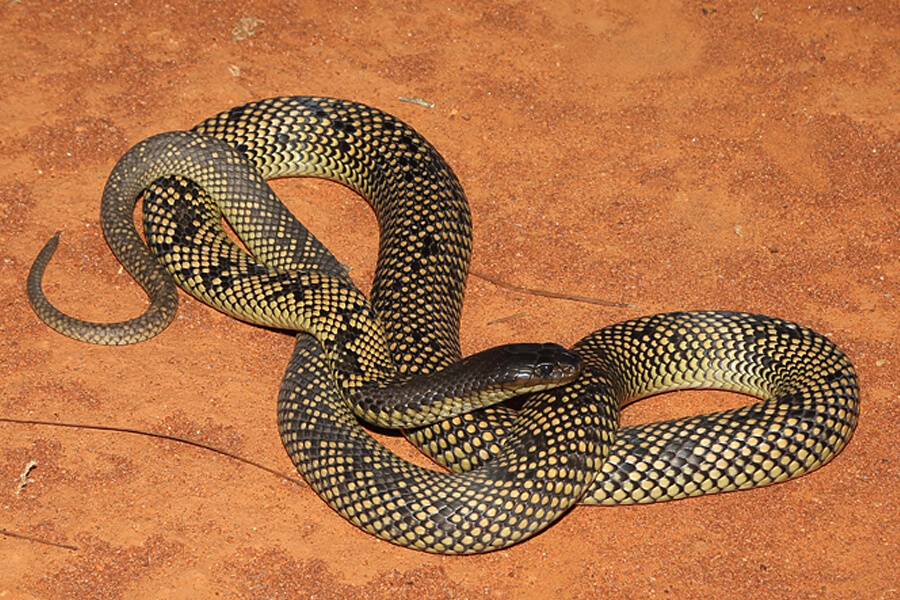Introduction
Tiger serpents (Notechis scutatus) are amongst one of the most interesting yet feared reptiles discovered in Australia. With their striking look and potent venom, these snakes evoke a mix of admiration and caution. Observing tiger snakes in their natural surroundings can be an exhilarating experience for nature fanatics, wild animals photographers, and researchers alike. Nonetheless, it's vital to approach this undertaking with regard for the pet's environment and an understanding of safety measures to avoid snake bites.
In this extensive overview, we'll check out how to safely observe tiger snakes in their all-natural habitat. We will certainly cover topics ranging from recognizing their habits and environments to emergency treatment for snake bites-- equipping you with expertise to enhance your experience while minimizing dangers.
What is a Tiger Snake?
Tiger snakes are very poisonous serpents belonging to Australia, especially Tasmania and seaside regions. They are known for their distinctive grouped coloration looking like a tiger's stripes, which can range from yellowish-brown to dark brownish and even black.
Physical Characteristics
Tiger serpents are tool to large-sized snakes that can mature to 2 meters long. Their bodies are robust, and they have a broad head that is noticeably larger than their necks.


Habitat Preferences of Tiger Snakes
These reptiles typically inhabit Nocturnal snakes Australia marshes, estuaries, and seaside regions however can also be located near freshwater resources like rivers and lakes. Comprehending where these snakes live is vital for anybody aiming to observe them safely.
Understanding Tiger Snake Behavior
Are Tiger Snakes Venomous?
Yes, tiger snakes are amongst the most poisonous serpent varieties globally. Their venom has neurotoxins that can result in major clinical complications if bitten.
Behavioral Traits
Tiger snakes are usually timid animals; they choose to avoid human interaction. Nonetheless, they can come to be aggressive if endangered or collared.
Where Can You Locate Tiger Snakes?
Tiger Snake Environment Exploration
To safely observe tiger serpents in their natural environment, it's crucial first to identify where they prosper. They have a tendency to favor:
- Coastal marshlands Mangroves Swamps Riverbanks
Best Areas for Observation
Some suggested areas consist of:
- Tasmanian wetlands The shorelines of southerly Australia National parks with water bodies
Safety Safety measures Prior to Observing Tiger Snakes
Understanding the Dangers of a Tiger Serpent Bite
Although Home page encounters with tiger serpents can be thrilling, knowing the dangers involved is extremely important:

First Help for Snake Bites: What You Required to Know
Knowing what steps to take if bitten could conserve your life or somebody else's:
- Stay calm; movement raises poison spread. Call for medical aid immediately. Do not use ice or attempt suctioning.
How to Securely Observe Tiger Snakes in Their All-natural Habitat
When you determine to observe tiger snakes in the wild:
Dress Appropriately: Wear lengthy pants and sturdy boots. Use Binoculars: Keep a safe distance while observing these reptiles. Avoid Abrupt Movements: Quick motions might shock them. Stay on Developed Trails: Avoid straying into thick underbrush where exposure is low.Equipment Required for Observation
Essential Equipment Checklist
- Binoculars First-aid kit specifically made for snake bites Field manual on Australian reptiles Camera (with zoom ability)
Snake Bite Emergency treatment Package Essentials
A well-appointed first aid set must include:|Product|Objective|| -------------------------------|-------------------------------|| Compression plaster|To incapacitate the damaged area|| Antihistamines|For allergic reactions|| Emergency situation call numbers|Quick accessibility throughout emergency situations|
Interpreting Tiger Snake Signals
Understanding just how tiger serpents interact with body language aids observers evaluate when it's risk-free or risky:
Common Behaviors
Defensive position: If coiled or increased off the ground. Retreating behavior: When they slowly pull back from prospective threats.Dealing With Potential Encounters
Even with precautions taken, an encounter might still happen during your monitoring trip:
Remain tranquility; panicking only increases risks. Slowly retreat without turning your back on the snake. Make your presence understood vocally but prevent sudden movements.Frequently Asked Questions Regarding Tiger Snakes
1. What must I do if I see a tiger snake?
Remain calmness; observe from a distance without troubling it.
2. Are child tiger snakes dangerous?
Yes, juvenile tiger serpents are Pre-hospital Care born venomous and may posture threats similar to adults in spite of being smaller.
3. Just how usual are tiger snake bites?
While events happen annually in Australia, casualties are uncommon as a result of timely therapy availability.
4. Can I keep a tiger serpent as a pet?
Keeping wild tiger snakes as animals is illegal in numerous regions because of conservation laws.
5. What does a tiger serpent bite look like?
Bite marks typically show 2 puncture wounds along with localized swelling and discoloration.
6. Exactly how reliable is antivenom?
Antivenom therapy is extremely reliable when provided prompt after a bite.
Conclusion
Observing tiger serpents in their natural habitat offers an exciting opportunity for wildlife fans but should be come close to with caution and respect for both the animal and its environment. By equipping yourself with understanding about these remarkable reptiles-- including comprehending their actions and safety measures-- you can delight in unforgettable experiences while significantly minimizing risks connected with encounters.
In summary, constantly focus on safety and security by preparing adequately prior to starting any wild animals observation exploration-- particularly when dealing with some of nature's most venomous creatures like the tiger snake!